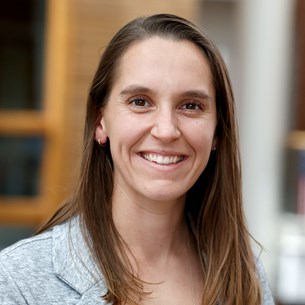Meeting
2022 ASCO Quality Care Symposium

Department of Epidemiology, Gillings School of Global Public Health, University of North Carolina at Chapel Hill, Chapel Hill, NC
Emilie Danielle Duchesneau, Til Sturmer, Dae Hyun Kim, Michele Jonsson Funk, Charles Poole, Alan C Kinlaw, Keturah R Faurot, Qoua L Her, Tiansheng Wang, Jennifer Leigh Lund
Background: Frail cancer patients are more likely to die or experience treatment toxicity than non-frail patients. The Faurot frailty index (FFI) is a validated Medicare claims-based proxy that predicts frailty in individuals. Frailty is dynamic and can change over time. We assessed the distribution of the FFI and associations with 1-year mortality using varying durations of frailty ascertainment windows in breast cancer patients. Methods: We identified women (66+ yrs) with stage I-III breast cancer in the SEER-Medicare database who had ≥1 year of continuous enrollment in Medicare Parts A and B prior to diagnosis. The FFI-predicted probability of frailty was assessed using demographic and diagnostic and procedural billing information during varying pre-diagnosis ascertainment windows: 3, 6, 8, or 12 months or using all available pre-diagnosis claims. We described the distributions of the claims-based frailty measures using each of the five ascertainment windows and reported 1-year mortality for individuals with high (≥0.20), medium (0.05 - < 0.20), or low (< 0.05) claims-based frailty using Kaplan-Meier analysis. Follow-up began on the date of cancer diagnosis. Results: We identified 235,145 women with breast cancer. Using a 3-month ascertainment window, 76%, 20%, and 4% were classified as having low, medium, and high claims-based frailty. Although the distributions of claims-based frailty were similar using 3, 6, 8, and 12-month frailty ascertainment windows, the use of all available lookback led a wider interquartile range (IQR) for claims-based frailty (Table). Overall, 4% of women died within 1 year of diagnosis. Higher claims-based frailty was strongly associated with increased 1-year mortality risk, using each ascertainment window. Mortality associations were strongest with a 3-month ascertainment window: risk difference (RD) high vs. low frailty 20% (95% CI, 19-20%). Associations were weakest with an all available lookback window: RD high vs. low frailty 11% (95% CI, 11-12%). Conclusions: Varying frailty ascertainment window durations did not lead to substantial differences in the distribution of the FFI in women with stage I-III breast cancer. Associations between the FFI and 1-year mortality monotonically decreased with increasing ascertainment window durations. This may be due to claims in the distant past having less etiological relevance for predicting mortality during the year following cancer diagnosis.
| Frailty ascertainment window (months) | Median FFI (IQR) | 1-year mortality risk (%) Low frailty | 1-year mortality risk (%) Medium frailty | 1-year mortality risk (%) High frailty | RD (95% CI) Medium vs. low |
RD (95% CI) High vs. low |
|---|---|---|---|---|---|---|
| 3 |
0.03 (0.02-0.05) | 2 | 8 | 22 | 6 (6-6) | 20 (19-20) |
| 6 | 0.03 (0.02-0.05) | 2 | 7 | 19 | 5 (5-6) | 18 (17-18) |
| 8 | 0.03 (0.02-0.05) | 2 | 7 | 19 | 5 (5-5) | 17 (16-18) |
| 12 | 0.03 (0.02-0.06) | 2 | 7 | 18 | 5 (4-5) | 16 (15-17) |
| All lookback | 0.03 (0.02-0.10) | 2 | 5 | 13 | 3 (3-3) | 11 (11-12) |
Disclaimer
This material on this page is ©2024 American Society of Clinical Oncology, all rights reserved. Licensing available upon request. For more information, please contact licensing@asco.org
2022 ASCO Quality Care Symposium
Poster Session
Poster Session B
Palliative and Supportive Care,Technology and Innovation in Quality of Care,Quality, Safety, and Implementation Science
Real-World Evidence
J Clin Oncol 40, 2022 (suppl 28; abstr 396)
10.1200/JCO.2022.40.28_suppl.396
396
E35
Abstract Disclosures
2023 ASCO Annual Meeting
First Author: Adriana Matutino Kahn
2023 ASCO Annual Meeting
First Author: Shuo Wang
2023 ASCO Annual Meeting
First Author: June Evelyn Jeon
2024 ASCO Quality Care Symposium
First Author: Erin Aiello Bowles